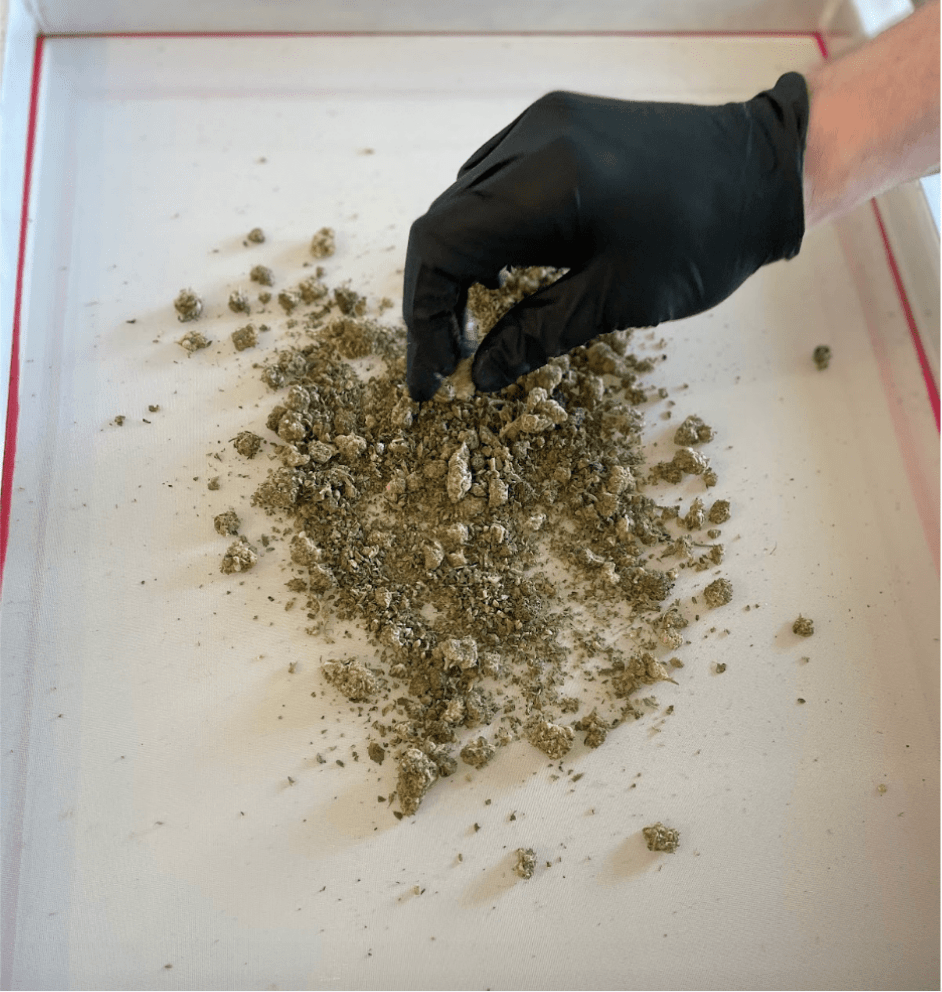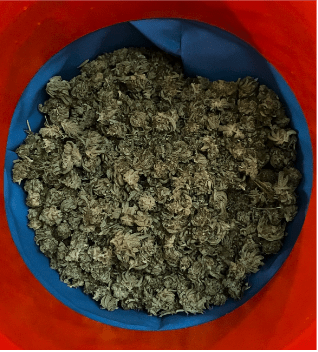Hashish: An In-Depth Exploration of a Traditional Cannabis Concentrate
What is hashish? Also known as hash, is a potent cannabis concentrate that has been enjoyed for centuries due to its unique properties and effects. Derived from the resinous trichomes of the cannabis plant, hashish offers a concentrated form of cannabinoids, providing users with a distinctive experience. This article aims to explain what is hashish and delve into the essence of hashish, covering its production process, consumption methods, and potential benefits.
Table of Contents
What is Hashish?
What is Hashish? Hashish is a cannabis concentrate obtained by separating the resinous trichomes from the plant material. These trichomes contain cannabinoids such as tetrahydrocannabinol (THC) and cannabidiol (CBD), along with various aromatic compounds known as terpenes, which contribute to the plant’s distinctive flavors and effects. Hashish is typically darker in color and has a more solid texture than traditional cannabis flowers.
What is Hashish? How is Hashish Made?
The production of hashish involves separating the trichomes from the cannabis plant material and compressing them into a solid form. There are several traditional methods used to extract the resin.
Hand-Rubbing Method
The hand-rubbing technique is one of the traditional methods used to make hashish. It involves manually separating the resinous trichomes from the cannabis plant material by gently rubbing it between the hands or using gloves. Here is a detailed explanation of the hand-rubbing technique for making hashish.
- Material Preparation
- Select high-quality cannabis flowers that are rich in resinous trichomes. The strain choice can impact the final flavor and effects of the hashish.
- Ensure that the flowers are adequately dried but still retain some moisture. This helps in preserving the resinous trichomes and facilitating the extraction process.
- It is common to use gloves during the hand-rubbing process to prevent the trichomes from sticking to the hands and to maintain hygiene. However, some individuals prefer the direct hand-to-flower contact for a more intimate connection.
- Rubbing Process
- Take a small amount of cannabis flowers and hold them between the palms of your hands (with or without gloves).
- Gently rub the flowers together by rolling them back and forth, applying light pressure. The heat and friction generated during this process cause the resinous trichomes to detach from the plant material.
- Continue rubbing for a few minutes until the resin accumulates on your hands or gloves. You will notice a sticky and dark residue forming.
- Collection and Compression
- Carefully collect the resin that has accumulated on your hands or gloves. This collected resin is commonly referred to as “charas.”
- To form hashish, take the collected resin and press it together. You can shape it into small balls, patties, or blocks, depending on your preference.
- Applying gentle pressure while shaping the hashish helps in further consolidating the resin and removing any excess moisture.
- Some hashish makers use additional techniques like heating or kneading the resin to improve its consistency and texture.
- Curing and Drying
- Once shaped, the freshly made hashish should undergo a curing process to remove any remaining moisture and enhance its flavor and potency.
- Place the formed hashish in a cool, dry, and dark environment for a period of time, typically a few days to several weeks. This allows the resin to dry and cure gradually.
- During the curing process, the hashish may darken in color and develop a more solid texture.
- The hand-rubbing technique for making hashish requires patience, skill, and an understanding of the desired consistency. The final product can vary in color, texture, and potency, depending on the quality of the starting material and the technique employed.
Sieving Method
The sieving method is another traditional technique used to make hashish. This method involves using a fine mesh screen or sieve to separate the resinous trichomes from the cannabis plant material. Here is a step-by-step explanation of the sieving method for making hashish.
- Material Preparation
- Choose high-quality cannabis flowers that are rich in resinous trichomes. The strain selection can influence the flavor and effects of the resulting hashish.
- Ensure that the flowers are adequately dried, as this helps in preserving the trichomes and facilitates the extraction process.
- You will need a fine mesh screen or sieve. The mesh size should be small enough to allow the trichomes to pass through while retaining the plant material.
- Setup
- Place the fine mesh screen or sieve over a clean surface, such as a tray or table, to collect the sifted trichomes. Make sure the surface is smooth and clean to prevent contamination.
- Some hashish makers prefer to use multiple screens with varying mesh sizes to achieve different qualities of hashish. Finer screens capture the highest grade trichomes, while coarser screens collect lower-grade trichomes.
- Sifting Process
- Take a small amount of cannabis flowers and gently rub or agitate them against the mesh screen. This causes the trichomes to separate from the plant material and fall through the screen.
- Use your hands, a brush, or a small card to gently sweep or agitate the flowers over the screen, ensuring that the trichomes are dislodged and pass through the mesh.
- Repeat this process with additional batches of cannabis flowers until you have sifted a sufficient amount of trichomes.
4. Collection and Compression
- Carefully collect the sifted trichomes that have accumulated on the surface below the mesh screen. This collected material is commonly known as “kief.”
- To form hashish, take the collected kief and compress it. This can be done by applying gentle pressure and shaping it into small balls, patties, or blocks.
- Applying light pressure during shaping helps in consolidating the trichomes and removing excess moisture.
- Some hashish makers use additional techniques like heat or pressure to further compact the kief, enhancing its consistency and texture.
5. Curing and Drying
- After shaping the hashish, it should undergo a curing process to remove any remaining moisture and enhance its flavor and potency.
- Place the formed hashish in a cool, dry, and dark environment for a period of time, typically a few days to several weeks. This allows the hashish to dry and cure gradually.
- During the curing process, the hashish may darken in color and develop a more solid texture.
- The sieving method for making hashish requires careful handling of the plant material and gentle agitation to separate the trichomes. The resulting hashish can vary in color, texture, and potency based on the quality of the starting material and the specific mesh size used.
Ice-Water Extraction
Ice-water extraction is a popular method for making hashish, particularly for those who prefer a clean and solvent-free process. This technique involves using ice-cold water to freeze the trichomes and separate them from the plant material. Here is a step-by-step explanation of how to make hashish using ice-water extraction:
- Material Preparation
- Choose high-quality cannabis flowers that are rich in resinous trichomes. The strain selection can influence the flavor and effects of the resulting hashish.
- Ensure that the flowers are adequately dried, as this helps in preserving the trichomes and facilitates the extraction process. You may also choose to work with whole-plant fresh-frozen (WPFF) material.
- Gather the necessary equipment, including a bucket or container, a set of fine mesh screens or bags with varying pore sizes (commonly referred to as “bubble bags“), and a stirring utensil.
- Preparing the Ice-Water Mixture
- Fill a bucket or container with ice-cold water. The water should be very cold, but not frozen.
- It is advisable to use distilled or filtered water to minimize impurities that may affect the quality of the final hashish.
3. Extraction Process
- Place the cannabis flowers in the ice-cold water. Stir gently to ensure that all the flowers are submerged.
- Allow the mixture to sit for a few minutes to let the trichomes freeze and become brittle.
4. Separation and Filtration

- Take the first mesh screen or the largest bubble bag with the largest pore size (this is usually to 220 micron bag) and secure it over another container. The container should be large enough to hold the water and trichomes that pass through the screen.
- Pour the cannabis and water mixture onto the mesh screen or bubble bag. As the mixture passes through, the frozen trichomes will separate from the plant material and collect in the container below.
- Line another container with the remaining mesh screens or bubble bags, using progressively smaller pore sizes (i.e. 25u on the bottom and 190u on top). This allows for the collection of different grades of trichomes, with the finest mesh capturing the highest quality.
5. Collection and Drying
- Carefully collect the trichomes that have accumulated in each container. It can be helpful to use a spoon that has been kept cold in the refrigerator. The collected material is commonly referred to as “hashish trichome heads” or “hashish resin.”
- Gently press the collected trichomes to remove excess moisture. It is important to handle them with care to avoid damaging their delicate structure.
- Spread the collected trichomes onto a clean and dry surface, such as a tray or parchment paper. Allow them to air dry in a cool, dark, and well-ventilated area until they reach the desired consistency.
- During the drying process, the trichomes will lose moisture and transform into hashish. The duration can vary, ranging from a few days to a couple of weeks, depending on the environmental conditions and personal preferences.
6. Curing (Optional)
- If desired, the dried hashish can undergo a curing process to further enhance its flavor, aroma, and potency.
- Place the hashish in a sealed container, such as a glass jar, and store it in a cool, dark, and dry place for a period of time. This allows the flavors and characteristics to develop and mature.
- During the curing process, periodically open the container to allow any residual moisture to escape, preventing mold or mildew formation. The duration of the curing process can range from a few weeks to several months.
By following these steps, you can create hashish using the ice-water extraction method. The resulting hashish will have a clean and pure profile, preserving the natural flavors and aromas of the cannabis trichomes.
How to Use Hashish
For those wondering what is hashish and how is can be consumed: Hashish can be consumed in various ways, offering users a range of experiences.
Smoking
The most common method of consuming hashish is by smoking it. Traditionally, small pieces of hashish are crumbled or rolled into a joint, mixed with tobacco, or placed on top of a bed of dried cannabis flowers in a pipe or bong. When heated, the hashish releases vapors containing cannabinoids, which are inhaled by the user.
Vaporizing
Vaporizers heat hashish to a temperature that vaporizes the cannabinoids without burning the plant material. This method provides a smoother and potentially healthier alternative to smoking, as it minimizes the production of harmful combustion by-products.
Edibles
Hashish can also be incorporated into food or beverages to create edibles. In this case, the hashish is first decarboxylated, a process that activates the cannabinoids, and then infused into fats or oils. The resulting infusion can be used in cooking or added to various recipes.
Benefits of Hashish
Potency
Due to its concentrated nature, hashish offers a more potent experience compared to traditional cannabis flowers. This potency can provide enhanced relaxation, euphoria, and pain relief for those seeking more pronounced effects.
Medical Potential
The cannabinoids present in hashish, particularly THC and CBD, have shown promise in alleviating symptoms of various medical conditions such as chronic pain, nausea, muscle spasms, and insomnia. Hashish can be a valuable option for medical cannabis patients seeking targeted relief.
Versatility
Hashish can be used in different consumption methods, providing users with a versatile experience. Whether smoked, vaporized, or infused into edibles, hashish allows individuals to customize their preferred method of consumption based on their needs and preferences.
Enhanced Flavor Profile
Hashish often possesses a distinct and robust flavor profile due to the concentrated terpenes it contains. These aromatic compounds contribute to the overall taste and aroma, providing a unique sensory experience for cannabis enthusiasts.
Longer Shelf Life
Compared to cannabis flowers, hashish has a longer shelf life due to its concentrated form and reduced exposure to air and moisture. Properly stored hashish can retain its potency and quality for an extended period, allowing users to enjoy its effects over time.
Portability
Hashish’s solid form makes it highly portable and discreet. It can be easily stored, carried, and consumed without the need for additional equipment or preparation. This convenience makes hashish a preferred choice for individuals seeking a portable and discreet cannabis experience.
Cultural and Historical Significance
Hashish holds significant cultural and historical value, particularly in regions where it has been consumed for centuries. Its usage has been deeply rooted in social and spiritual practices, playing a role in various rituals and ceremonies across different cultures.
What is Hashish: Conclusion

Hashish is a concentrated cannabis product obtained by extracting and compressing the resinous trichomes from the cannabis plant. Its potency, versatility, and unique flavor profile have made it a popular choice among cannabis enthusiasts for centuries. Whether smoked, vaporized, or infused into edibles, hashish offers users a distinctive and often more potent cannabis experience. Furthermore, its potential therapeutic benefits and longer shelf life add to its appeal. As with any cannabis product, responsible consumption and adherence to legal regulations are essential.










